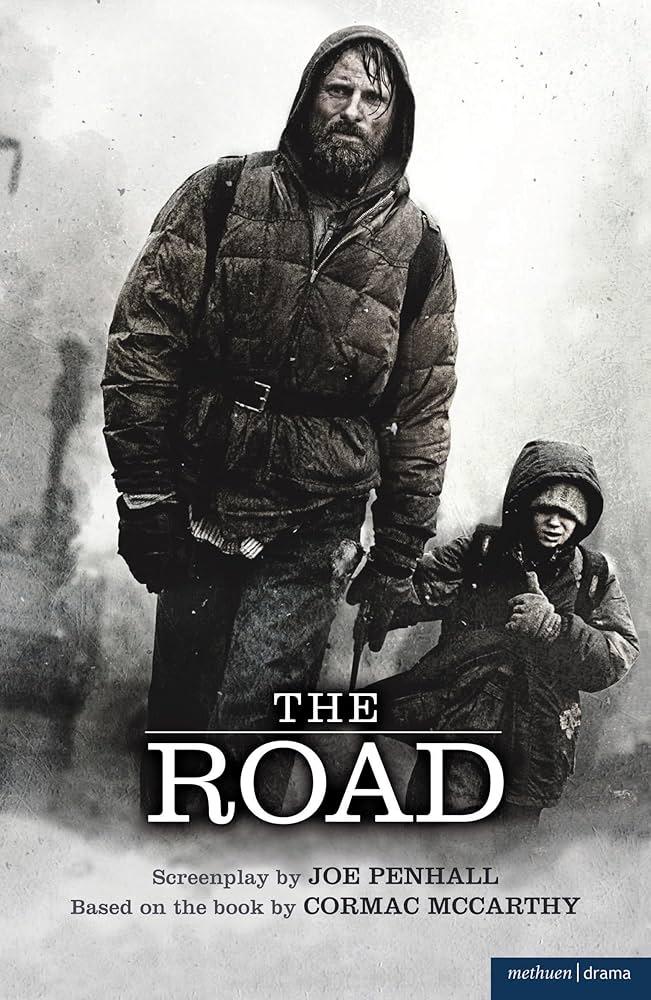Cormac McCarthy’s “The Road” is a haunting exploration of a post-apocalyptic world, where the remnants of humanity are scattered across a barren landscape. At its core, the novel delves deeply into the theme of isolation, examining its multifaceted impact on both the physical and psychological states of its characters. Through the journey of a father and son traversing a desolate terrain, McCarthy crafts a narrative that is as much about the external wasteland as it is about the internal solitude that accompanies survival. This article seeks to analyze how McCarthy employs isolation not merely as a backdrop but as a pivotal force that shapes the narrative’s emotional and existential dimensions. By exploring the nuanced portrayals of solitude, both enforced by the environment and self-imposed, we gain a deeper understanding of the novel’s commentary on the human condition amidst utter desolation.
Exploring the Landscape of Isolation in The Road
In Cormac McCarthy’s harrowing novel, the theme of isolation is intricately woven into the fabric of the narrative, painting a stark portrait of a world stripped bare. Isolation manifests physically, emotionally, and existentially, as the characters traverse a desolate landscape devoid of civilization. The barren environment underscores their solitude, with the absence of other human beings serving as a constant reminder of their isolation. The father and son duo, while bound together in their journey, experience an isolation that transcends mere physical separation from society. Their struggle to maintain their humanity in a world where survival often necessitates moral compromise highlights the deep emotional chasm that isolation can create.
- Physical Isolation: The lack of human contact amplifies the desolation of the landscape.
- Emotional Isolation: Even in their companionship, the father and son grapple with unspoken fears and the burden of hope.
- Existential Isolation: The absence of a recognizable world order leaves the characters in a state of profound disconnection from their own identities.
The novel’s sparse dialogue and minimalist prose further emphasize this pervasive sense of isolation, creating an atmosphere where silence speaks volumes. The road itself becomes a metaphor for the characters’ isolation, an endless stretch of uncertainty where each step forward is a leap into the unknown. In this relentless solitude, McCarthy explores the fragility of human connection and the enduring quest for meaning in a world that offers little solace. The isolation in “The Road” is not just a backdrop but a pivotal force that shapes the characters’ journey, revealing the resilience and vulnerability inherent in the human condition.
Character Isolation and Its Psychological Impacts
In Cormac McCarthy’s The Road, the motif of isolation emerges not only as a physical reality but also as a profound psychological challenge that shapes the characters’ experiences and interactions. The post-apocalyptic world in which the father and son traverse is one devoid of society’s familiar structures, leading to a pervasive sense of solitude. This isolation is not merely geographical but extends to the emotional and psychological realms, influencing their mental states and behaviors.
- Emotional Detachment: The father, grappling with the weight of survival, often exhibits emotional detachment as a coping mechanism. This distance serves as a shield against the constant threat of loss, yet it also underscores the pervasive loneliness that isolation engenders.
- Loss of Identity: In a world stripped of societal norms and personal connections, the characters face an erosion of identity. The absence of community and the constant struggle for survival blur the lines of self-definition, leading to a psychological fragmentation.
- Survival vs. Connection: The father-son relationship is a poignant exploration of the tension between the instinct to survive and the human need for connection. While their bond offers a semblance of companionship, it is continuously tested by the isolating landscape they navigate.
These elements illustrate how isolation in The Road is not merely a backdrop but a crucial force that shapes the characters’ psychological landscapes, challenging their resilience and humanity.

Isolation as a Reflection of Societal Collapse
In Cormac McCarthy’s The Road, the theme of isolation serves as a powerful mirror to the broader societal collapse that envelops the narrative. The barren landscapes and desolate settings underscore a world stripped of its societal structures, leaving individuals to navigate the remnants of civilization in solitude. This solitude is not merely physical but also deeply psychological, highlighting the profound disconnect between the past societal norms and the present dystopian reality.
- Breakdown of Community: The novel portrays a world where communities have disintegrated, leaving the characters isolated both from each other and from the past societal constructs that once offered security and identity.
- Loss of Communication: In a world devoid of communication networks, the characters experience a profound silence that amplifies their isolation, emphasizing the collapse of the interconnectedness that once defined human existence.
- Survival over Socialization: The focus on survival supersedes the need for social interaction, further illustrating the collapse of societal norms and the resulting alienation.
This depiction of isolation is a reflection of the collapse of the social order, illustrating how the absence of societal structures can lead to a profound sense of disconnection and existential solitude.

Recommendations for Analyzing Isolation in Literary Studies
To effectively analyze themes of isolation in The Road by Cormac McCarthy, consider the following approaches:
- Character Relationships: Examine the dynamics between the father and son. Their bond is a poignant portrayal of isolation amidst a desolate world. Analyze how their interactions contrast with the overwhelming solitude they face.
- Setting and Atmosphere: Delve into McCarthy’s use of a barren, post-apocalyptic landscape. Investigate how the stark environment reinforces the sense of isolation and how it mirrors the internal states of the characters.
- Symbolism and Imagery: Identify symbols that McCarthy uses to represent isolation. Consider the recurring motif of the road itself, as well as the pervasive grayness and silence, and how these elements contribute to the overarching theme.
- Narrative Style: Explore the minimalist dialogue and sparse prose. Analyze how McCarthy’s stylistic choices create a sense of isolation not only for the characters but also for the reader, enhancing the immersive experience of desolation.
By focusing on these elements, one can gain a deeper understanding of how McCarthy intricately weaves the theme of isolation into the fabric of his narrative, offering a profound commentary on the human condition.
Key Takeaways
Cormac McCarthy’s “The Road” intricately weaves themes of isolation throughout its narrative, reflecting the profound impact of solitude on the human psyche and relationships. The barren, post-apocalyptic landscape serves as a stark backdrop against which the characters’ emotional and physical isolation unfolds. The father and son’s journey underscores the tension between isolation and connection, highlighting their reliance on each other for survival in a desolate world. Through sparse dialogue and vivid imagery, McCarthy illustrates the pervasive loneliness that defines their existence, inviting readers to contemplate the resilience of the human spirit in the face of overwhelming desolation. By examining these themes, “The Road” offers a poignant exploration of the ways in which isolation shapes our understanding of humanity and our enduring quest for hope and meaning in a fractured world.
